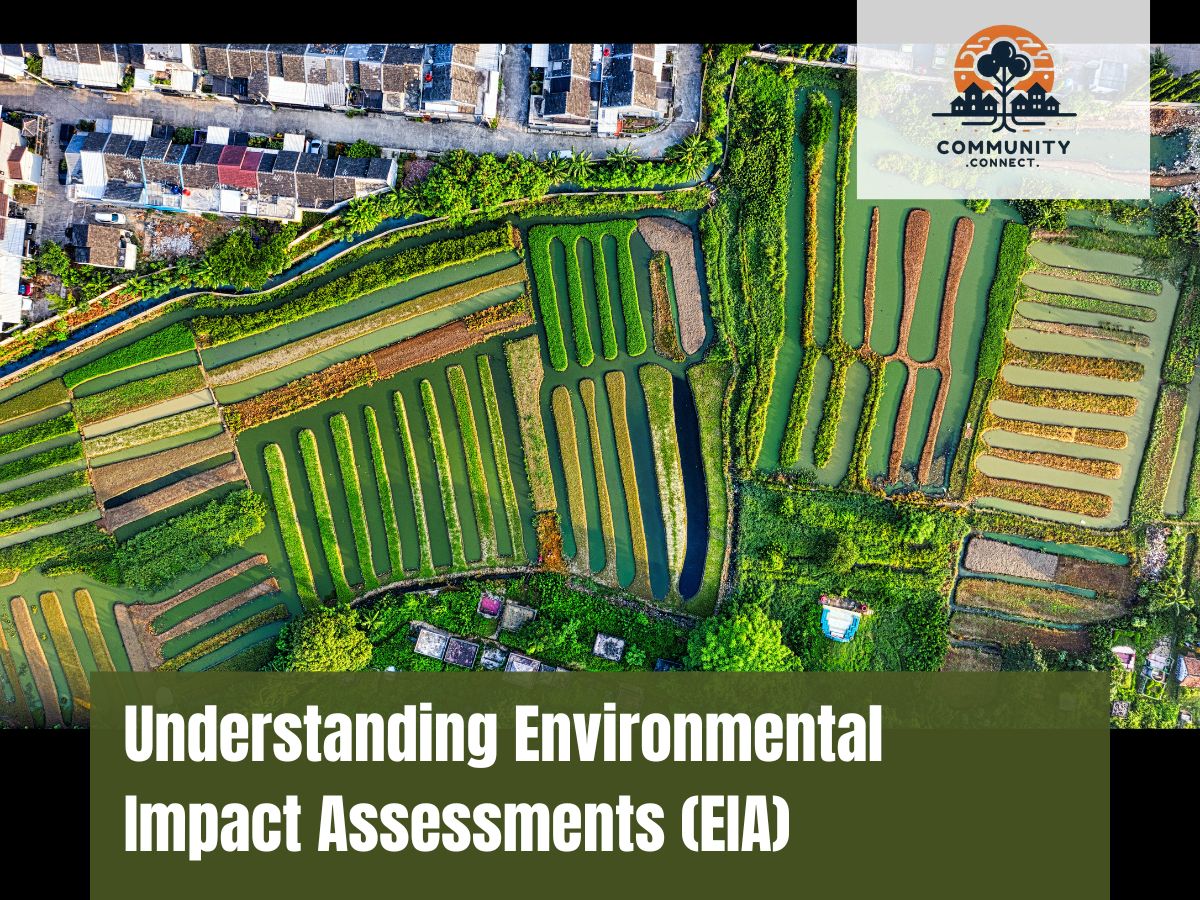If you’ve ever heard the term “EIA” thrown around in development meetings or government notices and wondered what it actually means—you’re not alone. Environmental Impact Assessments (EIA) are a critical yet often misunderstood tool in ensuring that developments don’t come at the cost of the environment or public health.
In Kenya, EIAs are required by law for many types of projects—whether it’s building a factory, constructing a road, or even setting up a new housing estate. So, understanding what they are, why they matter, and how they work can help you become a more informed citizen, professional, or planner.

What Is an Environmental Impact Assessment (EIA)?
An Environmental Impact Assessment (EIA) is a process used to predict the environmental consequences of a proposed development before it begins. It helps decision-makers understand the potential effects a project may have on the environment, local communities, and future generations—and then decide whether to go ahead, modify, or stop the project.
In Kenya, this process is governed by the Environmental Management and Coordination Act (EMCA), 1999 and overseen by the National Environment Management Authority (NEMA).
Why Are EIAs Important?
Let’s look beyond paperwork—EIAs are about protecting what matters.
1. Protecting Natural Resources
Whether it’s a forest, wetland, river, or wildlife habitat, EIAs help assess how a project might impact nature—and whether that impact is worth the cost. This helps us strike a balance between development and conservation.
2. Promoting Sustainable Development
EIA encourages developers to adopt environmentally friendly alternatives or incorporate mitigation measures. For instance, instead of draining a wetland, a developer might be guided to shift the project to a more suitable location.
3. Safeguarding Human Health
EIAs identify pollution risks—like air, water, or noise—that could affect nearby residents. Mitigating these risks protects people’s well-being.
4. Encouraging Public Participation
Public hearings are part of the EIA process in Kenya. This ensures that communities have a say in developments that affect them, giving voice to vulnerable groups that are often excluded.
What Projects Require an EIA in Kenya?
According to NEMA, projects that must undergo an EIA include (but are not limited to):
- Major roads and highways
- Housing estates
- Airports and railway lines
- Dams, irrigation schemes, and water reservoirs
- Waste disposal sites and sewerage systems
- Power plants and transmission lines
- Quarries and mining operations
- Oil and gas facilities
- Large-scale agriculture and land clearing
Even a small project near an ecologically sensitive area, like a river or forest, might require an EIA based on location and potential impacts.
The EIA Process in Kenya: Step-by-Step
Understanding how the process works can demystify it for the average person or stakeholder.
1. Screening
This determines whether a project needs a full EIA or just an Environmental Audit or Strategic Assessment.
2. Scoping
Identifies key environmental issues to be studied—like pollution, biodiversity loss, or community displacement.
3. Impact Assessment and Report Writing
Environmental experts analyze potential impacts and propose ways to avoid or minimize them. This becomes the EIA Report, often known as the Environmental Impact Assessment Study Report.
4. Public Participation
Local communities, interest groups, and government stakeholders are invited to comment on the report—either through public meetings or written feedback.
5. Submission to NEMA
The EIA report is submitted to NEMA for review. Experts assess whether the project meets legal and environmental standards.
6. Licensing Decision
NEMA either issues an EIA License, requests further study, or declines approval if risks are too high.
Common Challenges with EIAs in Kenya
While EIAs are a great tool, there are some real-world challenges:
- Corruption and political interference
- Insufficient community awareness or participation
- Developers bypassing or falsifying assessments
- Weak enforcement and monitoring of license conditions
Addressing these gaps requires stronger institutions, civic education, and public pressure.
How You Can Be Involved
You don’t need to be an environmentalist to participate in EIAs. As a citizen or planner:
- Attend public hearings for projects in your area
- Read EIA reports (they’re available to the public at NEMA offices or online)
- Submit comments or objections during the public participation phase
- Educate your community on what developments are happening and their environmental effects
Conclusion: Planning with the Environment in Mind
Environmental Impact Assessments remind us that the environment is not a separate thing from development—it’s part of it. EIAs are about asking the right questions before we build, not after the damage is done.
As Kenya continues to grow and urbanize, understanding and respecting the EIA process will ensure that we’re not just developing land—we’re shaping a healthier, safer, and more sustainable future for all.

Leave a Reply